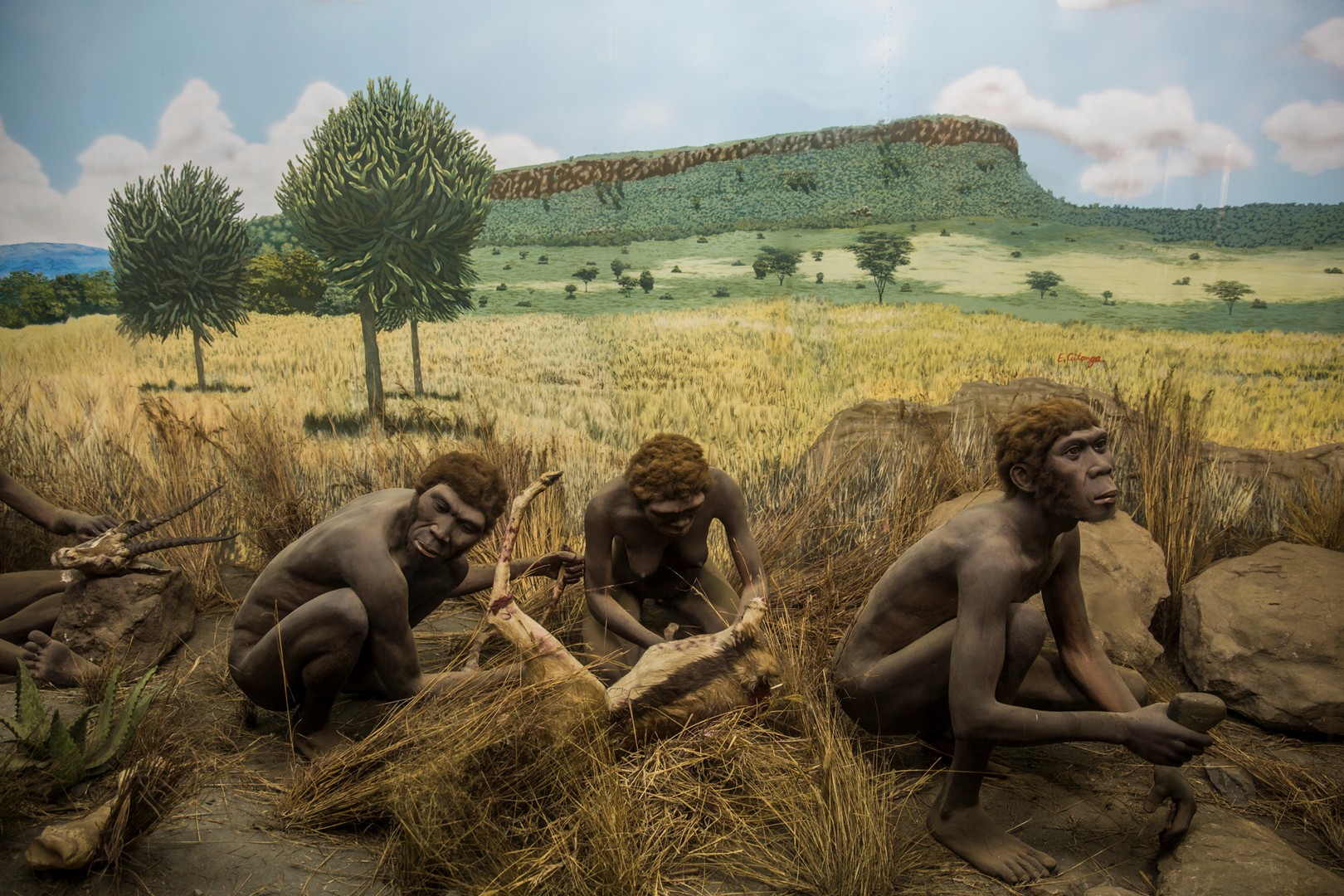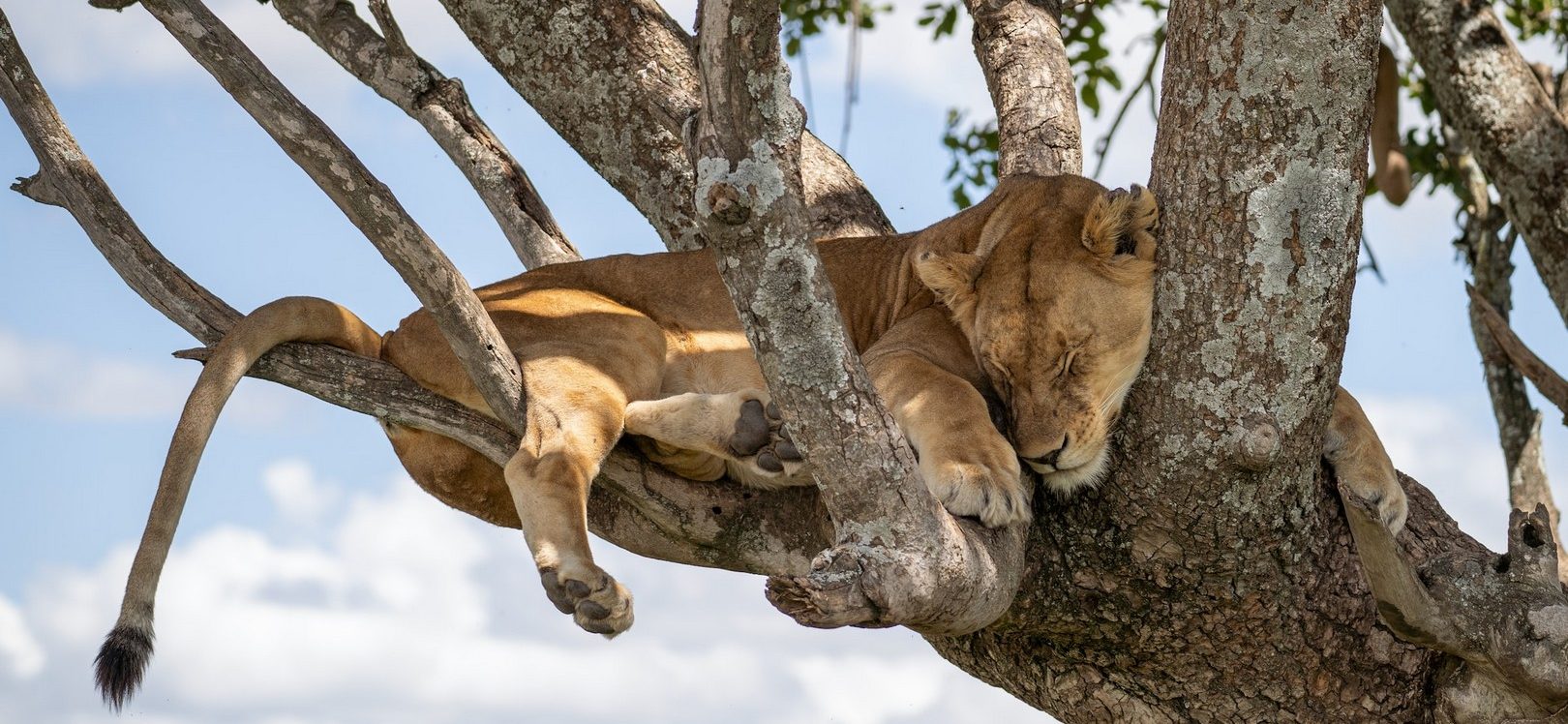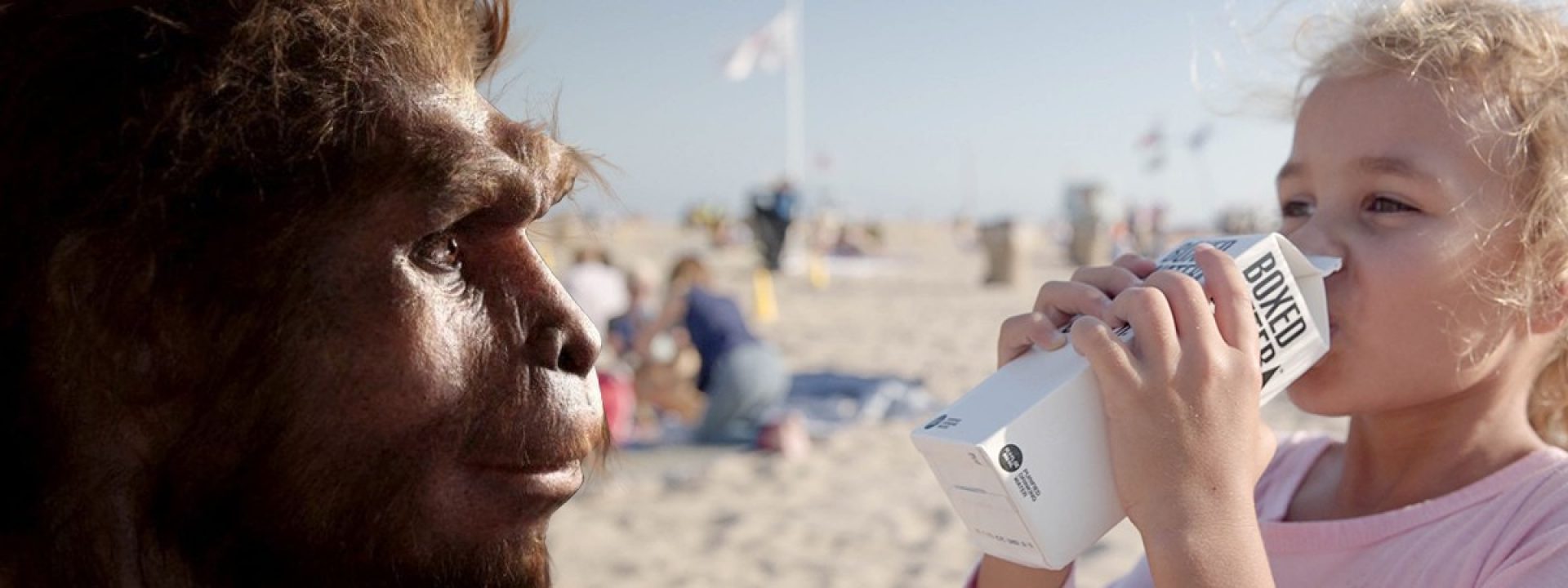
Between 1.8 and 1.5 million years ago, Homo habilis, hominids that inhabited the African rainforest, moved into the savannah. It was a remarkable change in their ecological environment, coinciding with the onset of the Pleistocene, a climatic period characterized by seasonal aridity.

Between 1.8 and 1.5 million years ago, Homo habilis, hominids that inhabited the African rainforest, moved into the Savannah, they no longer had hair and had fully developed the mechanism of thermoregulation by sweating. © Nairobi_National_Museum/ Ninara
Hunting in the sun
Paleontologists described those descendants of Australopithecus (one of the species that gave rise to the genus Homo in Africa some 2 million years ago) as habilis because of their ability to make carved stones as tools that were the extension of their limbs. This rudimentary technology, the first in history, became weaponry as Homo habilis perfected their neuromotor skills so that they were able to throw these tools from a distance and improve their aim.
This allowed them to hunt, an essential activity as the harvesting of fruits, seeds, and insects that abounded in the forest had drastically diminished in the savannah. Hunting enriched their diet, and their bodies grew and became more muscular, forcing them to be more physically active and travel long distances under the scorching sun.
Thermoregulation, a leap in evolution
A new evolutionary mechanism was set in motion: the loss of hair and the appearance on the white skin of tiny glands that expelled water from the body with a small amount of salts and metabolic waste substances dissolved in it. Natural selection had created thermoregulation by sweating, an adaptive mechanism that did not exist in their furry ancestors.
When the heat intensified or the physical exercise of hunting overheated their organism, Homo habilis sweated. When heated on the skin, the water in the sweat evaporates, a physicochemical process that absorbs heat from the body, cooling it so that its temperature does not exceed 37ºC, which could quickly lead to death.
No primate sweats, and among mammals, only horses do so. Other animals with intense physical activity regulate excess temperature by other metabolic control processes or reducing activity. Others, such as dogs, also dissipate heat by evaporating water through the tongue when panting.
We can see a reflection of this in the life of fur-bearing mammals on the savannah, which is primarily crepuscular. In the central hours of the day, when the temperature exceeds 45º, there is almost no muscular activity: predators rest in the shade of trees and bushes, and herbivores graze or ruminate. It is at dusk and at night, when the ambient temperature drops, that hunting starts. In this ecological environment, thermoregulation was a fundamental adaptive tool for hominids that had just emerged from the shade and humidity of the forest, which ensured an ambient temperature with little variation.
Thermoregulation by sweating also benefited from another evolutionary trait of these hominids: walking upright, and with only hair on their heads, they exposed less body surface to the sun and achieved more significant cooling by taking advantage of the savannah breeze.

In the central hours of the day, when the temperature exceeds 45º, in the savannah, predators rest in the shade, and herbivores graze or ruminate. © Pawel Wieladek- unsplash
Drinking became essential
But thermoregulation came at a price, dehydration, and bare-skinned hominids constantly relied on the need to replenish lost water. Paleontologists estimate that an adult Homo habilis could expel about three liters of sweat in a hunting session, similar to what a modern Homo sapiens can lose in an intense tennis match in the sun. Water from forest fruits was no longer enough for them; they had to drink it directly.
This provided them with another unique adaptation mechanism. Their intellectual capacity, enhanced by the planning and communication needs of hunting, allowed them to analyze the territory to find water. They were able to interpret geological and landscape signs to detect ponds, streams, and springs, places from which they never strayed far in their settlements and which they always took into account when planning their hunting expeditions.
Their skills in manufacturing tools gave them a new instrument that became vital: the container for storing water and transporting it on long journeys in search of food. The first canteens have left no fossil trace, as they must have been wineskins made from animal skins or other organic containers, such as gourds. There is also speculation that they used buried eggshells filled with water, which they placed strategically along their hunting and gathering routes, a practice still carried out by today’s Bushmen with ostrich eggs.

As they prospered as a species, Homo habilis occupied more territory generation after generation so that in one millennium, at an average of about 400 km per century, they could have expanded 4,000 km. © Atapuerca_Jonathan Jacobi
Water, an essential companion
Both skills, making canteens and searching for and finding water, were essential in the expansion of Homo habilis towards North Africa, from where they reached Eurasia through the Sinai Peninsula. At the Dmanisi site in Georgia, 1.8 million-year-old fossil skulls have been found that belonged to Homo habilis or the so-called Homo erectus, its later evolution. There is controversy about this among paleontologists, but there is consensus that they no longer had hair and had fully developed the mechanism of thermoregulation by sweating.
It is interesting to note, as Juan Luis Arsuaga, paleontologist and co-director of the Spanish Atapuerca site, argues, that this expansion from Africa was initially carried out without planned “journeys.” As they prospered as a species, Homo habilis occupied more territory generation after generation so that in one millennium, at an average of about 400 km per century, they could have expanded 4,000 km. Maritime expansion did involve planning the transport of food and water in the boats used, which must have been an essential qualitative leap in their instrumental technology.
The thermoregulation mechanism was perfected over a million and a half years in the species that followed Homo habilis, in parallel with their ability to manufacture tools and hydrological knowledge. We could no longer separate ourselves from water. When we reached Homo sapiens, the species to which we belong, the management of this knowledge was fundamental in the progressive abandonment of the life of hunter-gatherers to that of farmers. Similarly, the sedentary lifestyle that led to the construction of cities and the development of civilizations was closely linked to direct access to water as an essential factor of prosperity. This has been our fate and continues to be so in the Anthropocene, when we seem to have forgotten what allowed us to emerge from the forests: sweating and drinking.





